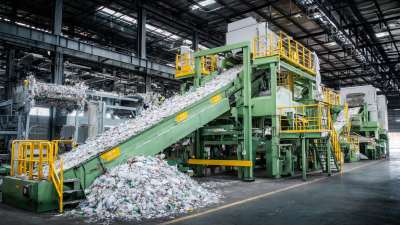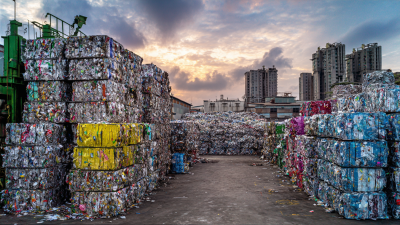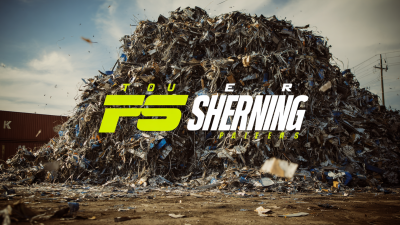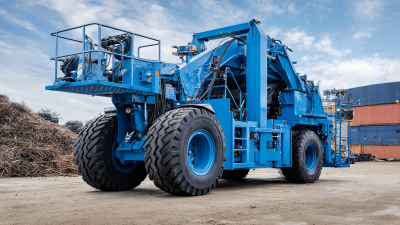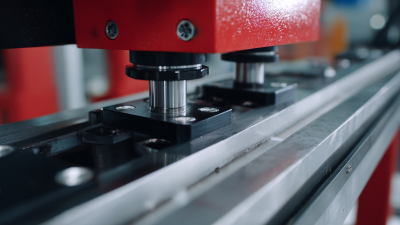The global demand for recycled plastics has surged, with the Plastics Industry Association reporting that plastic recycling in the United States alone has reached an estimated 4.4 million tons in 2021, underscoring the increasing emphasis on sustainable practices. As industries strive to meet recycling targets and reduce environmental impact, optimizing the recycling process has become crucial. A pivotal element in enhancing operational efficiency is the implementation of a Plastic Crusher Machine. This equipment not only streamlines the initial shredding of plastic waste but also plays a significant role in maintaining the quality of the recycled material. By reducing the size of plastic waste, it enables easier handling and promotes higher throughput in recycling operations. Therefore, understanding how to effectively use and maintain a Plastic Crusher Machine can lead to improved recycling outcomes and contribute to a more sustainable future for the plastic industry.
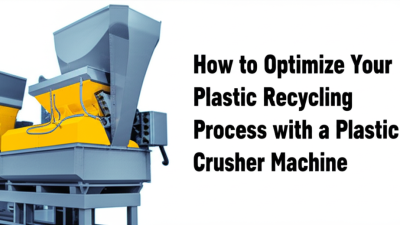
Plastic crushers play a vital role in enhancing the efficiency of recycling operations. By reducing plastic waste into manageable sizes, they facilitate the subsequent recycling processes, making it easier to sort and process materials. The significance of these machines lies not only in their ability to streamline operations but also in their contribution to sustainability. By ensuring that plastic materials are processed efficiently, plastic crushers help to maximize the recycling rate, thereby reducing the amount of waste that ends up in landfills.
Moreover, the use of plastic crushers can lead to cost savings for recycling facilities. Smaller plastic pieces are easier to transport and handle, resulting in lower logistics costs. Additionally, processing plastics into smaller sizes can improve the quality of the recycled output, which in turn can enhance market opportunities for the recycled products. Therefore, investing in a high-quality plastic crusher is an essential step for any recycling operation looking to optimize its processes and contribute positively to environmental sustainability.
Choosing the right plastic crusher machine is crucial for optimizing your plastic recycling process. When evaluating options, consider the types of plastics you intend to recycle. Different machines are designed for various materials, such as PET, HDPE, or PVC, each requiring a specific crushing mechanism. Look for a machine that accommodates the thickness and size of the plastics you work with, ensuring efficient processing without excessive wear and tear on the equipment.
Additionally, assess the machine's throughput capacity and power efficiency. A well-matched crusher will enhance your production rate while minimizing energy costs. It’s also important to evaluate the ease of maintenance and availability of spare parts, as this will affect long-term operational efficiency. Consider features such as noise reduction, safety mechanisms, and user-friendly controls, which can significantly impact the overall effectiveness of your plastic recycling efforts. Choosing the right machine tailored to your specific requirements will lead to sustainable practices and improved recycling outcomes.
When optimizing your plastic recycling process, selecting the right plastic crusher machine is crucial. A quality plastic crusher should incorporate specific features to maximize efficiency and output. Look for machines equipped with high-quality cutting blades and powerful motors that can handle various plastic types, including PET, HDPE, and PVC. According to a 2023 report by Transparency Market Research, the demand for plastic recycling machines is expected to grow at a CAGR of 6.5%, indicating a significant market shift towards efficient recycling practices.
In addition to robust construction, essential features include adjustable cutting sizes and ease of maintenance. Machines that allow operators to change the cutting parameters can adapt to different types of plastics and desired particle sizes, improving the overall recycling workflow. Moreover, considering energy consumption is vital; a study from the Association of Plastic Recyclers (APR) found that energy-efficient machines can reduce operational costs by up to 30%. These attributes not only enhance productivity but also align with sustainability goals, driving the transition to a more circular economy.
| Feature | Importance | Recommended Specification |
|---|---|---|
| Motor Power | Determines crushing efficiency and capability | At least 10 HP for medium-scale operations |
| Blade Material | Affects durability and maintenance frequency | High-carbon steel or alloy steel |
| Feed Size Capacity | Influences the size of plastic materials that can be processed | Up to 24 inches for larger items |
| Safety Features | Protects operators and maintains workplace safety | Emergency stop button, safety guards |
| Throughput Rate | Measures the efficiency of material processing | Minimum of 1000 kg/hr for industrial use |
| Noise Level | Affects operator comfort and compliance with regulations | Less than 85 dB for comfortable operation |
Integrating a plastic crusher machine into your recycling workflow can significantly enhance efficiency and sustainability. The first step is to assess your current plastic waste generation and identify the types of plastics you commonly handle. A recent report by the Association of Plastic Recyclers indicates that optimizing recycling processes can increase recovery rates by up to 30%. By implementing a plastic crusher, which reduces large plastic items into manageable pieces, you streamline subsequent processing steps, making it easier to sort and recycle.
To effectively incorporate a plastic crusher, consider starting with a pilot program where you can collect failed or excess 3D prints, then grind them into small fragments. This approach not only saves materials but also minimizes waste going to landfills. A notable recent initiative showcased the collection of PLA prints, highlighting how grinding and reprocessing them can yield new products.
Tips: Always ensure that your plastic crusher is compatible with the types of plastic you intend to recycle. Conduct regular maintenance to keep the machinery operating efficiently. Additionally, training staff on the proper use of the crusher can lead to significant improvements in productivity and safety within your recycling operations.
Maintaining your plastic crusher machine is crucial for ensuring optimal performance throughout its operational lifespan. Regular maintenance routines, including cleaning, lubrication, and inspection of components, can help prevent potential breakdowns and performance issues. Always check for worn-out blades and replace them as needed, as dull blades can hinder efficiency and result in unevenly crushed plastic. Furthermore, ensure that the crushing chamber is free of debris and that the airflow is unobstructed to facilitate proper material flow.
Troubleshooting your plastic crusher is also essential to address problems swiftly and minimize downtime. Common issues may include unusual noises, overheating, or inconsistent crushing. If you observe any abnormal sounds, it may indicate loose parts or damaged components that require prompt attention. Monitoring the temperature of the motor is also important; excessive heat might signify a jam or an overloaded machine. By identifying these issues early on and conducting repairs promptly, you can maintain the machine's efficiency and extend its operational life. Regular operator training on how to troubleshoot common problems can significantly enhance the overall performance of the plastic recycling process.
This bar chart illustrates the improvement in recycling process efficiency before and after the optimization using a plastic crusher machine. The data shows an increase from 60% efficiency to 85% efficiency, highlighting the benefits of maintaining and troubleshooting your plastic crusher for optimal performance.
